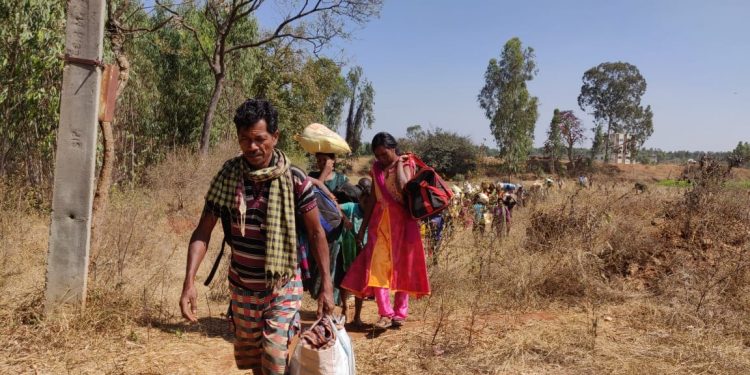Bhubaneswar: The agony and distress the migrant labourers underwent due to Covid-induced lockdowns could hardly be forgotten by anyone who has seen the pictures of homebound migrants walking the roads barefoot along with their families.
As per Union government data, over 60 million people had to return to their villages due to the lockdowns which affected the lives and livelihoods of migrants working in different locations. The migrants faced immense difficulties due to job loss, lack of food, shelter and other social measures.
Recently, several civil society organisations (CSOs) here jointly conducted a survey in 20 districts of Odisha to understand the situation of migrants during Covid-19 lockdowns. Debabrat Patra, associate director of ActionAid, said, “Through this survey, we observed the jobless situation and difficulties the migrants faced while returning to their homes during the lockdown and now we also observed reverse migration where the migrant labours are forced to return back to other states in search of jobs.”
A survey report says 70 per cent migrant labours have reported loss of livelihood, 43 per cent have been stranded for more than a month during lockdowns, 45 per cent were forced to vacate their houses and 67 per cent had to curtail their food consumption. Similarly, 58 per cent were exhausted with their savings as they could not get any livelihood opportunities. Likewise, 45 per cent did not get their entitlements and 48 per did not have access to primary healthcare facilities.
Patra said that better coordination between the state governments could have helped in addressing the issue of migrant labourers.
Sudarshan Chhotoray, a city-based social activist, said that the government could have tried to improve the skills of the migrant workers so that they don’t have to again travel to the other states. “We have also seen that MGNREGA was not helpful in engaging a large number of labourers. The government could have used different sectors such as textiles and MSMEs for engaging the migrant labourers.”
He said that during the beginning of the lockdown more than 50 per cent of the migrant population of the state returned to their native places while the remaining 50 per cent found alternatives in Capital city.
Saroj Kumar Barik of Aide-et-action, which works for the migrant labourers’ welfare, said that the state government should have created a database of the migrant population of the state working outside. The lack of database about them was a big problem during Covid-19 crisis. “The database of the labourers helps in helping them during crisis like this or natural calamities like earthquakes,” he said.
The government could have implemented the Inter-State Migrant Worksmen Act-1979 under which the worskmen or migrant workers are required to be registered with registering officers appointed under the Union or state governments, Barik added.
Chairperson of Odisha Building and Other Construction Workers’ Welfare Board, Ramesh Chandra Chyau Patnaik said that the government is trying to engage the migrant population in block levels by improving their skills. “We are also engaging them in different MSMEs so that they don’t have to go to other states again,” Patnaik added.
Arindam Ganguly, OP






































